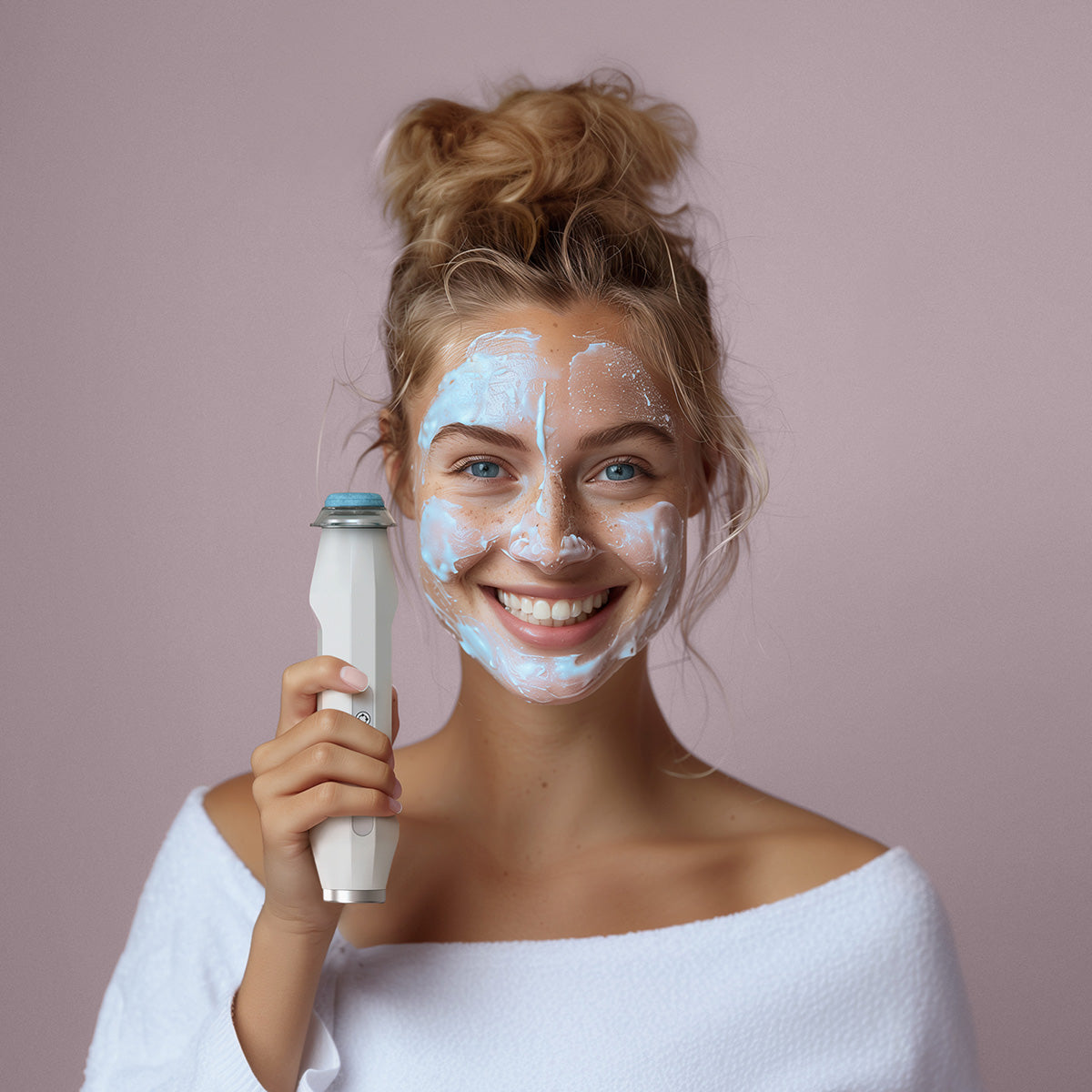Real-World Clinical Results Using the Luminance RED for Cold Sores
Living with the herpes simplex virus (HSV) isn’t easy. It comes with a plethora of negative feelings, like shame, embarrassment, and maybe even resentment or self-pity.
One of the most common symptoms of the herpes simplex virus type one (HSV-1) is the development of a cold sore. These contagious sores start as blisters and usually develop along the lips or around the mouth. A cold sore is typically preceded by a 24-hour prodromal period of pain, tingling, and itching, and crusts over to form a scab after five to eight days — not a pleasant way to spend a week!
No matter the emotional or physical toll HSV takes, know that you’re not alone. In fact, it’s estimated that up to 80% of Americans will be infected with HSV in their lifetime, either through oral or genital contact with an infected person. Unfortunately, treatments for cold sores are not always effective, but one option that’s gathered steam in recent years is light therapy, also known as photomedicine or phototherapy.
That’s one of the reasons why we decided to conduct our own in-house study to evaluate the performance of the Luminance RED Lip Sore Treatment Device, a handheld phototherapy product designed for the treatment of small areas of the lip and mouth affected by cold sores from HSV.
The real-world results from our study were very encouraging and demonstrate that the Luminance RED Lip Sore Treatment Device is an effective treatment option for frustrating cold sores.
Light Therapy and Cold Sores
Light-based therapies using low-level red and infrared light have proven effective at healing cold sores caused by HSV infections.
The efficacy of light therapy in reducing the duration of HSV infection was first demonstrated by a Dougal et al study in 2001. Subsequent studies have also shown positive results, proving that frequent light therapy applications can reduce cold sore healing time by several days — something that would make a big difference to any cold sore sufferer! In vitro studies have also shown that low-intensity light has a direct effect on viral replication of herpes simplex viruses.
Light therapy aids in wound healing and can increase collagen production, both of which cause significant improvements in the appearance and healing timeline of cold sores.
Overview of Our Study
With support from dermatologist Dr. Leo Wang, MD, Ph.D. from the University of Pennsylvania, we tested the effectiveness of the Luminance RED Lip Sore Treatment Device on patients age 18 and older with a history of recurrent cold sores on the lips (herpes labialis). 77 applicants submitted pictures of their affected areas to confirm their eligibility. Ultimately, the study included 23 participants, with 19 (83%) women and four (17%) men.
Participants were instructed to use the Luminance RED Lip Sore Treatment Device on the affected areas three times per day for two days, with each treatment session lasting three minutes. 35% of participants used the device to prevent additional cold sores, while 65% used it solely to treat existing sores.
Promising Results
The average total duration of treatment was seven days. The average time to crusting was three days, and the average time to complete healing was six days. These results align with existing peer-reviewed studies that indicate red light therapy speeds up the cold sore healing process.
At both the beginning and conclusion of the study, patients were asked to complete two different quality-of-life surveys: the Dermatology Life Quality Index (DLQI) and Cardiff Acne Disability Index (CADI). The DLQI measures various aspects of skin-health-related quality of life over one week, while the CADI is shorter and targeted more toward acne sufferers.
Compared to the DLQI and CADI scores reported at the beginning of the study, participants saw a significant increase in quality of life and high satisfaction with the Luminance RED Lip Sore Treatment Device for both the treatment and prevention of cold sores.
An impressive 60% of repeated cold sore sufferers also felt the device reduced the frequency of their cold sores.

Figure 1. Herpes labialis at D0, D4, and D10, indicating vesicular phase, crusting phase, and re-epithelialization, respectively

Figure 2. Herpes labialis at D1, D5, and D9, indicating vesicular phase, crusting phase, and re-epithelialization, respectively

Figure 3. CADI and DLQI scores before and after Luminance RED treatment

Figure 4. Frequency of cold sores before and after Luminance RED treatment
Surveyed participants gave the Luminance RED device a 9.25/10 on the net promoter scale, suggesting they are highly likely to recommend the product to a friend or family member suffering from a cold sore.
Final Thoughts
This study was limited by virtual enrollment — meaning we were unable to confirm that a cold sore was being treated within 36 hours of its appearance. In some cases, the outcomes reported by participants did not align with a dermatologist’s interpretation of the outcomes.
Overall, however, the positive results and improved quality of life show that light therapy is an effective treatment option for cold sores. Additional studies will provide more insight into how light therapy can be used to treat HSV.
If you’d like to participate in future studies using Luminance RED devices, please email us at info@luminancemedical.com.

















